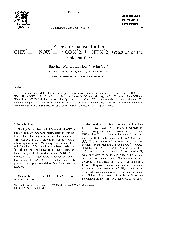摘要
Using second-order Moller-Plesset (MP?) perturbation theory, a new mechanism for the reaction of CH((XII)-I-2)+ NO((XII)-I-2) + CO(X(3)Sigma(-)) + NH(X(3)Sigma(-)) has been revealed on the (3)A" potential energy surface. The association of CH with NO leads to cis-HCON which decomposes directly to the products CO + NH via a four-membered ring transition state. The minimum-energy path is analyzed by an intrinsic reaction coordinate calculation. G1, G2 and G2MP2 methods are used to obtain the barrier heights and reaction heats.
- 出版日期1999-5-14
- 单位山东大学
